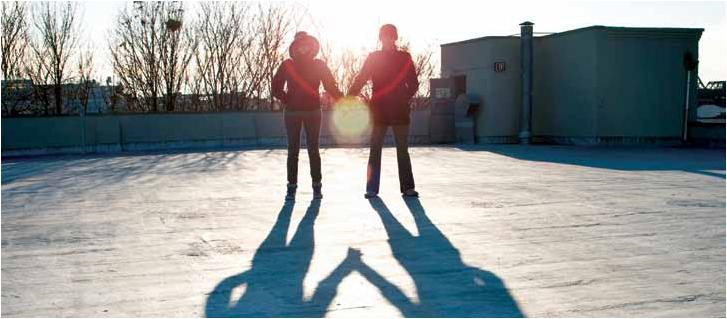Solar Reflectance Roof Covering Materials
A cool idea for saving energy
Energy conservation and green construction codes and regulations include requirements for buildings to be designed to use energy effectively to save natural resources. One method for doing this involves the use of solar reflectance roofing materials, sometimes referred to as “cool roofs.” A cool roof works by both absorbing the sun’s heat and reflecting (or radiating) it back to the sky instead of transferring it into the building structure.

The effectiveness of a cool roof is measured by solar reflectance and thermal emittance. Both properties are measured individually from 0 to 1.0, with 1.0 being the material with the best performance.
UL testing and certifications
UL evaluates solar reflectance roof covering materials using requirements developed by many sources. Solar reflectance measurements, which evaluate temperatures and heat flows across surfaces exposed to solar radiation, are typically determined in accordance with ASTM C1549, Standard Test Method for Determination of Solar Reflectance Near Ambient Temperature Using a Portable Solar Reflectometer. Thermal emittance measurements, which evaluate temperatures, heat flows, and derived thermal resistances of materials, are typically determined in accordance with ASTM C1371, Standard Test Method for Determination of Emittance of Materials Near Room Temperature Using a Portable Emissometer.
UL certifies solar reflectance roof covering materials based on them meeting or exceeding the minimum initial solar reflectance measurements as specified in Product Specification Eligibility Criteria of the ENERGY STAR® Program Requirements for Roof Products, which includes a three-year weather exposure test. Materials evaluated for low-slope installations are intended for use on roof surfaces with an incline of 2-inch or less rise per horizontal foot. Materials evaluated for steep-slope installations are intended for use on roofs with an incline of greater than 2-inch rise per horizontal foot.
For certification of field applied roof coatings, the products are investigated on a smooth light-gauge metal substrate at the intended application thickness. For information on varying thicknesses of coating and alternate substrates, refer to the detailed installation instructions accompanying the certified product.
Roofing materials complying with the ENERGY STAR® program requirements are certified under the UL’s Energy Efficiency Certification Program. Individual certifications including the manufacturer’s name, material designations, and the Certificates of Conformance can be found in the UL SPOT® database. It houses all the UL environment validated and certified products. These certifications are also found on the EPA’s ENERGY STAR®website at www.energystar.gov.
Certificate holders are also entitled to display the UL Energy Verified Mark for the certified products listed on the certificate. Information concerning the specific initial solar reflectance values is provided in the detailed installation instructions accompanying the certified product. UL has already certified nearly 700 products under the EPA’s Energy Star program.
Code enforcement considerations
Energy conservation and green construction codes are beginning to require roofing materials used in a variety of different occupancies and building types to meet specific solar reflectance and thermal emittance requirements. An example is the California Energy Code which, with some exceptions, requires nonresidential buildings with low-sloped roofs in climate zones 2 – 15 to have a minimum 3-year aged solar reflectance of 0.55 and a minimum thermal emittance of 0.75.
Copyright © material from Issue 3, 2011, The Code Authority newsletter. This material may not reflect changes that have occurred since its original publication.